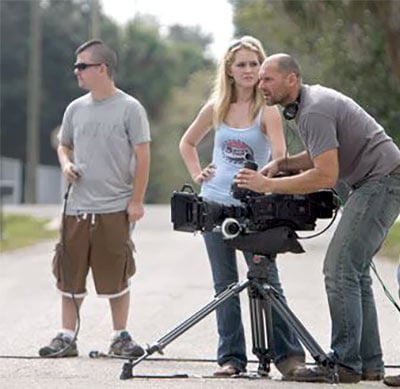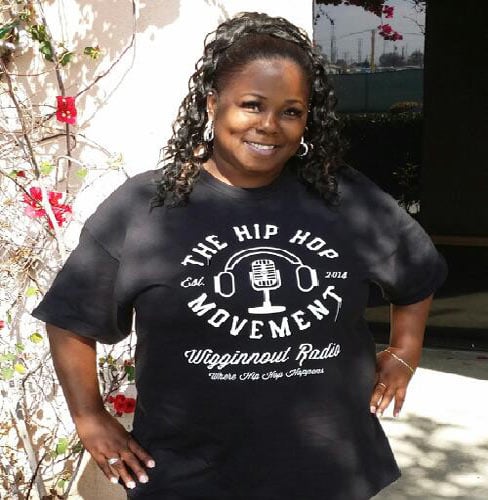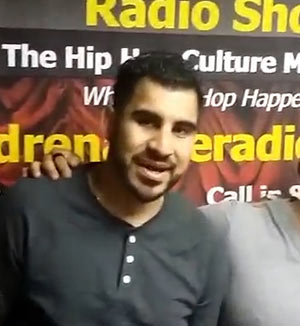Please fill out the following information, and RRFC Admissions will contact you to discuss our program offerings:
Issue #49
by L. Swift and Jeff McQ


 From the beginning of Tim’s apprenticeship with Csaba Bereczky at Hollywood Sky Entertainment in Beverly Hills, CA, he was immersed in the actual workings of the film industry (even his preliminary mentor interview took place on-set). “Working with [Csaba] was really, really fun,” says Tim. “He would be honest with me and demand that I did the best that I could. I was just willing to work hard.”
Learning hands-on with Csaba turned out to be just what Tim needed to clarify his own career path. “As I started to work on-set and saw what each of those person’s lives entailed, I thought, ‘Yeah, directing would be cool, but it’s not something that I would be.’… It’s not something that I could see myself doing long term.”
What he did discover while training on-the-job, however, was that he was very interested in the art department, and set design in particular. While working with his mentor on the set during a shoot for AT&T, he made a seemingly random connection that would change his focus completely.
“I ended up meeting up with a production designer who asked me about my background, and I told him it was in construction,” says Tim. “He called me a couple of months later and asked if I would come to work. And they saw that I was really good at building, and they said, ‘Hey, you want to continue to build stuff for music videos and commercials that we do?’ And I said, ‘Yeah!’
Since completing his Film Connection apprenticeship, that connection Tim made on-set has led to steady work in production and set design in Los Angeles. “The art department is not a lax job,” he says, but he enjoys the challenge, and sees himself continuing long-term. “It would be wonderful to be in the union on a TV show,” he says. He also likes the consistency of work that comes with the job: “Working on the construction side, you have five days of work,” he says, “so it’s nice because you get more days of work rather than just working one day if you were camera department.”
Working on-the-job with the Film Connection not only helped Tim figure out what he really wanted to do in film, but the connections he made led directly to his successes today. His advice for other film apprentices? Make connections.
“Get to know everyone,” he says. “Just talk to every single person. Get their email, get their phone number, and continually email, text, or call them and let them know what you’re up to. Ask them what they’re up to, because when it comes time that someone says, ‘Hey, we really need this. Do you know anybody?’, then you’re going to be the first name they think of.”
From the beginning of Tim’s apprenticeship with Csaba Bereczky at Hollywood Sky Entertainment in Beverly Hills, CA, he was immersed in the actual workings of the film industry (even his preliminary mentor interview took place on-set). “Working with [Csaba] was really, really fun,” says Tim. “He would be honest with me and demand that I did the best that I could. I was just willing to work hard.”
Learning hands-on with Csaba turned out to be just what Tim needed to clarify his own career path. “As I started to work on-set and saw what each of those person’s lives entailed, I thought, ‘Yeah, directing would be cool, but it’s not something that I would be.’… It’s not something that I could see myself doing long term.”
What he did discover while training on-the-job, however, was that he was very interested in the art department, and set design in particular. While working with his mentor on the set during a shoot for AT&T, he made a seemingly random connection that would change his focus completely.
“I ended up meeting up with a production designer who asked me about my background, and I told him it was in construction,” says Tim. “He called me a couple of months later and asked if I would come to work. And they saw that I was really good at building, and they said, ‘Hey, you want to continue to build stuff for music videos and commercials that we do?’ And I said, ‘Yeah!’
Since completing his Film Connection apprenticeship, that connection Tim made on-set has led to steady work in production and set design in Los Angeles. “The art department is not a lax job,” he says, but he enjoys the challenge, and sees himself continuing long-term. “It would be wonderful to be in the union on a TV show,” he says. He also likes the consistency of work that comes with the job: “Working on the construction side, you have five days of work,” he says, “so it’s nice because you get more days of work rather than just working one day if you were camera department.”
Working on-the-job with the Film Connection not only helped Tim figure out what he really wanted to do in film, but the connections he made led directly to his successes today. His advice for other film apprentices? Make connections.
“Get to know everyone,” he says. “Just talk to every single person. Get their email, get their phone number, and continually email, text, or call them and let them know what you’re up to. Ask them what they’re up to, because when it comes time that someone says, ‘Hey, we really need this. Do you know anybody?’, then you’re going to be the first name they think of.”
 At RRF we believe the greatest wisdom in the world benefits no one if it is not shared and made useful.
We work hard to stay on the cutting-edge of mentor-led education. The more we know about YOU, the better equipped we are to create the tools that will help you hone your craft and break you in to the industry you want to work in!
Please help us continue in our mission by taking the survey found here.
At RRF we believe the greatest wisdom in the world benefits no one if it is not shared and made useful.
We work hard to stay on the cutting-edge of mentor-led education. The more we know about YOU, the better equipped we are to create the tools that will help you hone your craft and break you in to the industry you want to work in!
Please help us continue in our mission by taking the survey found here.
 RRF: What made you pull the trigger on the Wigginnout concept? Was there a moment in your life where you said, “I’ve got to do this”?
Melody: Yes…When I was in New York, I saw so many of the hip-hop artists. They were mainly mainstream artists, but I saw them get so much recognition. And what I do admire about New York versus California is New York will look out for its own.
RRF: What about being a female in the radio business? Do you think the playing field is level, or do you think it’s still a boy’s business overall?
Melody: I think it’s still a boy’s business. I think that female disc jockeys, on-air personalities, whatever you want to call them, have to fight for their position. It’s not consistent with women…I think with males, being in the position that I’m in, when people decide to work with them in the radio industry, they pretty much are consistent and know that’s what they really want. It seems like when they’re working with a female, they’re undecided. They’re trying to feel it out, you know what I mean? They always have a back up plan.
RRF: So how do you think women can be stronger in the radio business?
Melody: Just being consistent. Not giving up. I think with women, too, we have to aim so high to get more celebrity artists than we do versus independent or underground artists. And I think that’s how we make a name for ourselves.
RRF: What made you pull the trigger on the Wigginnout concept? Was there a moment in your life where you said, “I’ve got to do this”?
Melody: Yes…When I was in New York, I saw so many of the hip-hop artists. They were mainly mainstream artists, but I saw them get so much recognition. And what I do admire about New York versus California is New York will look out for its own.
RRF: What about being a female in the radio business? Do you think the playing field is level, or do you think it’s still a boy’s business overall?
Melody: I think it’s still a boy’s business. I think that female disc jockeys, on-air personalities, whatever you want to call them, have to fight for their position. It’s not consistent with women…I think with males, being in the position that I’m in, when people decide to work with them in the radio industry, they pretty much are consistent and know that’s what they really want. It seems like when they’re working with a female, they’re undecided. They’re trying to feel it out, you know what I mean? They always have a back up plan.
RRF: So how do you think women can be stronger in the radio business?
Melody: Just being consistent. Not giving up. I think with women, too, we have to aim so high to get more celebrity artists than we do versus independent or underground artists. And I think that’s how we make a name for ourselves.
 RRF: Where did our apprentice Brian Valdovinos come into the picture? What did he do for you?
Melody: If I gave him an assignment like, “Follow up on this venue. See if we can have this venue on this day,” he did that. If I said, “Okay, call the artist, talk to the artist, tell me what your feel is on the artist,” he would do that. If I said, “Do some research about what’s happening in sports or celebrity news,” he would do that. I mean, there’s no job that Brian wouldn’t take on to support the show.
RRF: Where do you see hip-hop 10 years from now?
Melody: I think hip-hop would never die. At one point I did think hip-hop was just a phase that was going to come in and then go back out, but I see the longevity of it. It’s going to go to a level beyond where it’s at now…I see it as being there for a long time.
ADDENDUM: BREAKING NEWS! Another of Melody’s students, Maryam Shepardson, just landed a position at Power 106, proof-positive that women are fierce in radio! More on this in weeks to come!
RRF: Where did our apprentice Brian Valdovinos come into the picture? What did he do for you?
Melody: If I gave him an assignment like, “Follow up on this venue. See if we can have this venue on this day,” he did that. If I said, “Okay, call the artist, talk to the artist, tell me what your feel is on the artist,” he would do that. If I said, “Do some research about what’s happening in sports or celebrity news,” he would do that. I mean, there’s no job that Brian wouldn’t take on to support the show.
RRF: Where do you see hip-hop 10 years from now?
Melody: I think hip-hop would never die. At one point I did think hip-hop was just a phase that was going to come in and then go back out, but I see the longevity of it. It’s going to go to a level beyond where it’s at now…I see it as being there for a long time.
ADDENDUM: BREAKING NEWS! Another of Melody’s students, Maryam Shepardson, just landed a position at Power 106, proof-positive that women are fierce in radio! More on this in weeks to come!




RRFC is education upgraded for the 21st century.
Get the latest career advice, insider production tips, and more!
Please fill out the following information, and RRFC Admissions will contact you to discuss our program offerings:
Stay in the Loop: Subscribe for RRFC news & updates!
© 2025 Recording Radio Film Connection & CASA Schools. All Rights Reserved.


